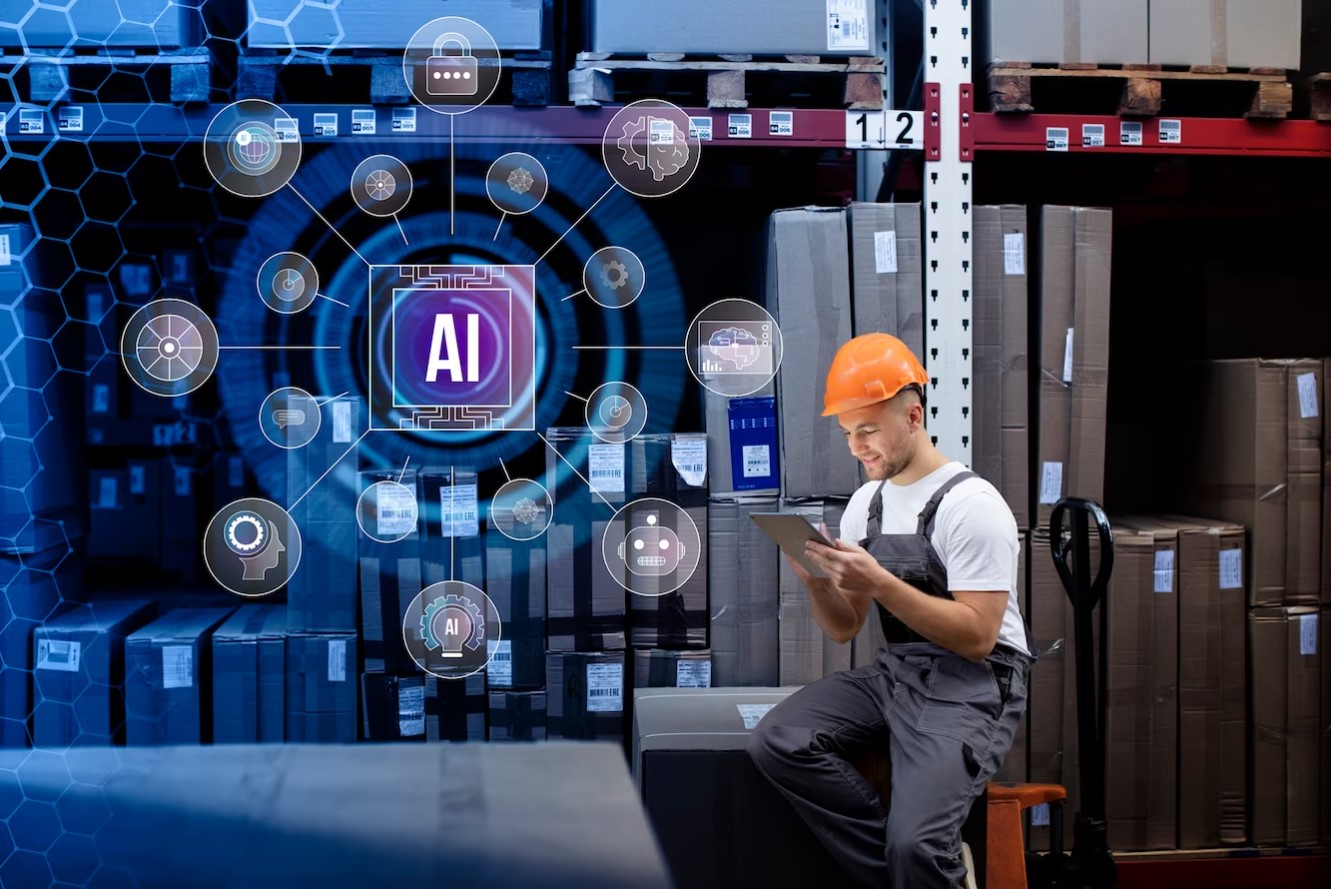While AI promises exciting possibilities in the trading world, it’s crucial to acknowledge the potential risks associated with this technology. This article explores the various pitfalls of relying on AI for trading decisions, from algorithmic biases to unexpected market behavior. By understanding these risks, you can make informed choices about incorporating AI into your trading strategies.
The Rise of Algorithmic Trading
The Rise of Algorithmic Trading has transformed the financial markets, ushering in an era where sophisticated algorithms and automated systems play a pivotal role in trading activities. Traditionally, trading involved human decision-making based on analysis and intuition. However, with the advent of algorithmic trading, the landscape has evolved.
Algorithmic trading utilizes complex mathematical models to analyze market data and execute trades at high speeds. This has brought about a shift from manual to automated trading strategies. The algorithms are designed to identify patterns, trends, and opportunities in the market, enabling swift and precise decision-making. This efficiency has not only increased the speed of transactions but has also led to improved market liquidity.
One significant aspect of the rise of algorithmic trading is the reduction in human error. Automated systems follow predefined rules and execute trades without emotional influence, eliminating the impact of impulsive decisions. This shift has contributed to increased trading volumes and enhanced market efficiency. As technology continues to advance, algorithmic trading is expected to further shape the landscape of financial markets, providing new opportunities and challenges for traders and investors alike.
Risks Associated with AI in Trading
AI’s integration into trading practices has undeniably brought numerous benefits, but it also comes with inherent risks that necessitate careful consideration. Here are key risks associated with AI in trading:
- Lack of Human Oversight
- Algorithms operate based on pre-programmed rules, lacking the ability to adapt to unforeseen circumstances.
- Without human oversight, there’s a risk of unchecked trading activities, potentially leading to significant financial losses.
- Algorithmic Biases
- AI models can unintentionally incorporate biases present in historical data, leading to skewed decision-making.
- Biased algorithms may amplify market inequalities and hinder fair and equitable trading practices.
- Market Manipulation
- Sophisticated algorithms can be exploited for market manipulation, especially in fast-paced trading environments.
- Coordinated efforts to manipulate markets using AI-driven strategies can disrupt market integrity.
- Volatility and Market Fluctuations
- AI’s rapid processing of information can contribute to increased market volatility.
- Sudden and unexpected market fluctuations may occur due to algorithmic trading strategies reacting to perceived signals.
- Data Security Concerns
- Vulnerabilities in AI trading systems can be exploited by malicious actors, leading to unauthorized access or manipulation of sensitive financial data.
- The interconnected nature of financial markets makes them susceptible to cyber-attacks, posing a threat to data security.
To navigate these risks effectively, it’s crucial for the financial industry to establish robust oversight mechanisms, implement ethical AI practices, and continuously adapt regulatory frameworks to the evolving landscape of AI in trading.
Volatility and Market Fluctuations
Volatility and market fluctuations are inherent aspects of financial markets, and the integration of AI in trading has the potential to both exacerbate and mitigate these dynamics. Let’s delve deeper into this topic:
Impact of AI on Market Volatility
The rapid processing capabilities of AI algorithms can amplify market volatility in several ways:
- High-Frequency Trading (HFT): AI-driven algorithms execute trades at exceptionally high speeds, contributing to short-term market fluctuations.
- Algorithmic Reactions: AI algorithms react swiftly to changes in market conditions, leading to rapid buying or selling activities that can intensify price movements.
- Herding Behavior: Algorithms may exhibit herding behavior, where multiple algorithms react similarly to perceived signals, exacerbating market movements.
Instances of Sudden Market Fluctuations
AI’s role in market fluctuations is evident in various instances:
- Flash Crashes: Rapid and unexpected market downturns, known as flash crashes, can occur due to algorithmic trading strategies triggering a cascade of automated sell orders.
- Algorithmic Errors: Malfunctioning algorithms or erroneous data inputs can lead to sudden and significant market fluctuations.
- Unforeseen Events: AI algorithms may struggle to anticipate and react appropriately to unforeseen events, resulting in heightened market volatility.
While AI contributes to market volatility, it also offers potential solutions through advanced risk management techniques and real-time monitoring. It’s essential for market participants to understand and address the complexities of AI-driven trading to mitigate the risks associated with increased volatility and market fluctuations.
Regulatory Challenges
Regulating the integration of AI in trading poses significant challenges as the financial landscape undergoes rapid technological advancements. The complexities involved necessitate a nuanced approach to address the following regulatory challenges:
| Challenges | Description | Impact |
| Pace of Technological Innovation | The speed at which AI technologies evolve surpasses traditional regulatory frameworks. | Regulatory lag may result in outdated rules that fail to adequately address emerging risks. |
| Lack of Standardization | Absence of standardized practices in AI implementation across the industry. | Inconsistent application of AI in trading may lead to regulatory arbitrage and uneven market playing fields. |
| Transparency and Explainability | Difficulty in understanding complex AI algorithms and their decision-making processes. | Regulatory bodies face challenges in enforcing transparency standards, potentially hindering accountability. |
| Ethical Considerations | The ethical implications of AI in trading, including biases and fairness concerns. | Crafting ethical guidelines for AI systems in trading poses a regulatory conundrum. |
| Cross-Border Regulations | Global nature of financial markets requires cooperation among regulatory bodies globally. | Fragmented regulations may create jurisdictional challenges and hinder effective oversight. |
Addressing these regulatory challenges requires collaborative efforts among industry stakeholders, policymakers, and regulatory bodies to establish comprehensive frameworks that balance innovation with risk mitigation.
Human vs. AI Decision-Making
The comparison between human and AI decision-making in the context of trading unveils a nuanced interplay of strengths and limitations for each. Let’s explore these aspects through distinct lists:
Human Decision-Making
Advantages:
- Intuition and Emotion: Human traders can leverage intuition and emotional intelligence to interpret market sentiment and make decisions based on a broader understanding of economic factors.
- Adaptability: Humans possess the ability to adapt swiftly to unexpected events and changing market conditions, adjusting trading strategies in real-time.
- Nuanced Judgment: The human mind can incorporate qualitative factors, such as news events and geopolitical developments, into decision-making, providing a more holistic perspective.
Challenges:
- Subjectivity: Human decisions may be influenced by personal biases and emotions, leading to suboptimal choices and increased susceptibility to market trends.
- Limited Processing Speed: Humans are relatively slow in processing vast amounts of real-time data, making it challenging to compete with AI algorithms in high-frequency trading environments.
- Fatigue and Stress: Traders can experience fatigue and stress, impacting their decision-making abilities and potentially leading to errors during extended trading sessions.
AI Decision-Making
Advantages:
- Speed and Efficiency: AI algorithms can process massive datasets at incredible speeds, enabling rapid analysis and execution of trades, particularly in high-frequency scenarios.
- Data-Driven Precision: AI relies on objective data, minimizing the influence of emotions and subjective biases in decision-making, leading to more consistent outcomes.
- Continuous Operation: Unlike humans, AI systems can operate 24/7 without the need for breaks, ensuring constant monitoring of market conditions and opportunities.
Challenges:
- Lack of Intuition: AI lacks human-like intuition and may struggle to interpret unstructured data or adapt to unforeseen circumstances as effectively as human traders.
- Over-Reliance on Historical Data: Algorithms may be limited by historical data, potentially leading to biased decision-making or an inability to adapt to unprecedented market events.
- Inability to Grasp Context: AI may struggle to understand the broader context of global events, potentially making decisions solely based on patterns without considering external factors.
Balancing the strengths of human and AI decision-making is crucial for optimizing trading strategies. Integrating the complementary aspects of both approaches can lead to more resilient and adaptive trading practices.

